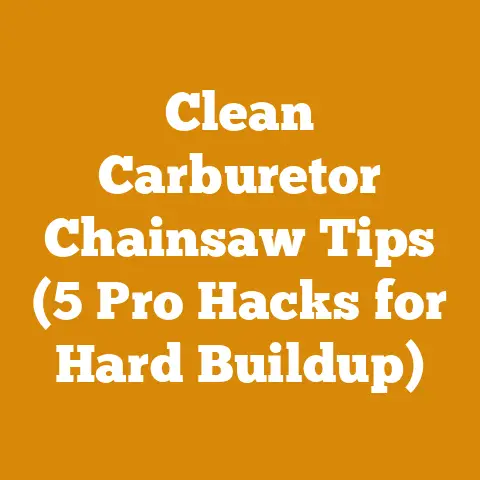Get Rid of Wood Bees (5 Pro Tips for Woodworkers)
Understanding the Wood Bee Problem and Its Cost Implications
Before we dive into the solutions, let’s understand why wood bees are a problem and how they can impact your wallet. Carpenter bees, often mistaken for bumblebees, don’t eat wood like termites. Instead, they drill perfectly round holes (usually about 1/2 inch in diameter) to create nests for their offspring. While a few holes might seem harmless, repeated infestations can weaken wooden structures over time, leading to costly repairs or even replacements.
- Structural Damage: Left unchecked, wood bee activity can compromise the integrity of decks, fences, siding, and other wooden elements of your home or workshop.
- Aesthetic Damage: Those unsightly holes can detract from the beauty of your woodworking projects and decrease their value.
- Repair Costs: Fixing wood bee damage can involve filling holes, reinforcing weakened areas, and applying protective coatings, all of which cost time and money.
- Prevention Costs: Taking proactive measures to deter wood bees is often cheaper than dealing with the aftermath of an infestation.
As a seasoned woodworker, I’ve seen firsthand the havoc these little guys can wreak. I remember one project, a beautiful cedar pergola I built for a client. A year later, I got a call about “strange holes” appearing in the posts. Sure enough, wood bees had moved in! Luckily, I caught it early, but it still cost me time and materials to repair the damage and implement preventative measures. That experience taught me the importance of vigilance and proactive pest control.
Pro Tip 1: Identifying and Sealing Existing Wood Bee Holes
The first step in getting rid of wood bees is to identify and seal any existing holes. This prevents them from returning to the same nesting sites year after year.
Cost Breakdown:
- Materials:
- Wood Filler: A good quality wood filler (e.g., epoxy wood filler) costs around \$15-\$30 per quart. I prefer epoxy fillers for their durability and resistance to moisture.
- Caulk: Exterior-grade caulk costs around \$5-\$10 per tube. Choose a paintable caulk if you plan to paint over the repaired areas.
- Wood Putty: Wood putty is another option, costing around \$8-\$15 per container. It’s best for smaller holes and cosmetic repairs.
- Wood Dowels: Wood dowels can be used to plug larger holes. A pack of assorted dowels costs around \$10-\$20.
- Tools:
- Putty Knife: A basic putty knife costs around \$5-\$10.
- Caulk Gun: A caulk gun costs around \$10-\$20.
- Sandpaper: Sandpaper (various grits) costs around \$5-\$10 per pack.
- Drill (Optional): If using wood dowels, you may need a drill to enlarge the hole slightly. A decent drill costs around \$50-\$150.
- Labor:
- DIY: If you’re doing it yourself, the labor is free (except for your time!).
- Professional: Hiring a handyman to seal wood bee holes can cost \$50-\$100 per hour, depending on the scope of the job.
Example Calculation:
Let’s say you have 10 wood bee holes to fill. You choose to use epoxy wood filler and caulk.
- Epoxy Wood Filler: \$20
- Caulk: \$8
- Putty Knife: \$7
- Sandpaper: \$6
- Total Material Cost: \$41
- Labor Cost (DIY): Free
Total Cost (DIY): \$41
Data Point: According to HomeAdvisor, the average cost to repair wood damage caused by insects is \$550, with a typical range of \$276 to \$825. Sealing holes promptly can prevent this costly damage.
Tip: I’ve found that using a shop vacuum to clean out the holes before filling them ensures better adhesion and prevents debris from interfering with the repair.
Pro Tip 2: Applying Insecticides and Repellents
While sealing holes is crucial, it’s often not enough to completely eliminate wood bees. Applying insecticides and repellents can provide an extra layer of protection.
Cost Breakdown:
- Insecticides:
- Dust Insecticides: Boric acid or diatomaceous earth are effective dust insecticides. They cost around \$10-\$20 per container.
- Liquid Insecticides: Liquid insecticides containing pyrethroids (e.g., permethrin, cypermethrin) can be sprayed into the holes. They cost around \$20-\$40 per bottle.
- Repellents:
- Essential Oils: Certain essential oils, like tea tree, peppermint, and citrus, are known to repel wood bees. A bottle of essential oil costs around \$10-\$20.
- Homemade Sprays: You can make a repellent spray by mixing essential oils with water and a carrier oil (e.g., neem oil).
- Tools:
- Duster: A duster for applying dust insecticides costs around \$5-\$10.
- Spray Bottle: A spray bottle for liquid insecticides or repellents costs around \$5-\$10.
- Protective Gear: Gloves and a mask are recommended when handling insecticides. They cost around \$10-\$20.
- Labor:
- DIY: The labor is free if you’re doing it yourself.
- Professional: Hiring a pest control company to apply insecticides can cost \$100-\$300, depending on the size of the area treated.
Example Calculation:
Let’s say you choose to use boric acid dust and a homemade repellent spray.
- Boric Acid: \$15
- Essential Oils: \$20
- Spray Bottle: \$7
- Protective Gear: \$15
- Total Material Cost: \$57
- Labor Cost (DIY): Free
Total Cost (DIY): \$57
Data Point: According to the National Pest Management Association, Americans spend over \$8 billion annually on pest control services. Using DIY methods can significantly reduce these costs.
Tip: When using insecticides, always follow the manufacturer’s instructions carefully and wear appropriate protective gear. I prefer using natural repellents whenever possible to minimize the impact on the environment.
Pro Tip 3: Trapping Wood Bees
Wood bee traps are a non-toxic way to capture and eliminate these pests. They work by luring bees into a chamber from which they cannot escape.
Cost Breakdown:
- Wood Bee Traps:
- DIY Traps: You can build your own wood bee traps using scrap wood, plastic bottles, and some basic tools. The material cost is minimal (around \$5-\$10).
- Commercial Traps: Commercial wood bee traps cost around \$20-\$40 each.
- Labor:
- DIY: Building your own traps requires some time and effort.
- Purchase: Buying a pre-made trap is more convenient but costs more.
Example Calculation:
Let’s say you decide to build two DIY wood bee traps.
- Scrap Wood: \$5
- Plastic Bottles: \$0 (recycled)
- Screws/Nails: \$3
- Total Material Cost: \$8
- Labor Cost (DIY): Several hours of your time
Total Cost (DIY): \$8 + Your Time
Data Point: A study by the University of Kentucky found that wood bee traps can be an effective way to reduce wood bee populations in localized areas.
Tip: I’ve found that placing traps near existing wood bee holes or in areas with high bee activity increases their effectiveness. Adding a small amount of sugar water or honey to the trap can also attract more bees.
Pro Tip 4: Painting or Staining Wood Surfaces
Wood bees prefer to nest in unfinished wood. Painting or staining wood surfaces can make them less attractive to these pests.
Cost Breakdown:
- Paint/Stain:
- Exterior Paint: A gallon of high-quality exterior paint costs around \$30-\$50.
- Exterior Stain: A gallon of exterior stain costs around \$25-\$40.
- Primer:
- Exterior Primer: A gallon of exterior primer costs around \$20-\$30. Primer helps the paint or stain adhere better and provides an extra layer of protection.
- Tools:
- Paintbrushes/Rollers: Paintbrushes and rollers cost around \$10-\$20 each.
- Paint Tray: A paint tray costs around \$5-\$10.
- Drop Cloths: Drop cloths protect your surrounding surfaces from paint splatters. They cost around \$10-\$20.
- Painter’s Tape: Painter’s tape helps create clean lines. It costs around \$5-\$10 per roll.
- Labor:
- DIY: Painting or staining yourself saves on labor costs.
- Professional: Hiring a painter can cost \$2-\$4 per square foot.
Example Calculation:
Let’s say you want to paint a 100-square-foot deck.
- Paint: \$40
- Primer: \$25
- Paintbrushes/Rollers: \$15
- Paint Tray: \$7
- Drop Cloths: \$12
- Painter’s Tape: \$6
- Total Material Cost: \$105
- Labor Cost (DIY): Free
Total Cost (DIY): \$105
Data Point: According to the U.S. Bureau of Labor Statistics, the median hourly wage for painters is around \$20 per hour. Painting yourself can save you a significant amount of money.
Tip: I always recommend using a high-quality exterior paint or stain that is specifically designed for wood. This will provide the best protection against wood bees and other pests.
Pro Tip 5: Using Hardwoods
Wood bees prefer softwoods like pine and cedar. Using hardwoods like oak, maple, or walnut can make your woodworking projects less susceptible to wood bee infestations.
Cost Breakdown:
- Wood Costs:
- Softwood (Pine/Cedar): Softwood lumber typically costs \$3-\$5 per board foot.
- Hardwood (Oak/Maple/Walnut): Hardwood lumber typically costs \$5-\$15 per board foot, depending on the species and grade.
Example Calculation:
Let’s say you’re building a small table that requires 10 board feet of lumber.
- Softwood: 10 board feet x \$4/board foot = \$40
- Hardwood: 10 board feet x \$8/board foot = \$80
Cost Difference: \$80 – \$40 = \$40
Data Point: According to the USDA Forest Service, hardwood lumber prices have been steadily increasing in recent years due to high demand and limited supply.
Tip: While hardwoods are more expensive than softwoods, they offer superior durability and resistance to pests and decay. Investing in hardwoods can save you money in the long run by reducing the need for repairs and replacements. I always weigh the cost of the material against the longevity and resistance it provides for exterior projects.
Additional Cost Considerations and Budgeting Tips
Beyond the specific tips above, there are several other cost factors to consider when dealing with wood bees:
- Location: The cost of materials and labor can vary significantly depending on your location. Urban areas typically have higher prices than rural areas.
- Accessibility: If the wood bee damage is in a hard-to-reach area, it may require specialized equipment or labor, which can increase the cost.
- Severity of Infestation: The more extensive the wood bee damage, the more it will cost to repair.
- Preventative Maintenance: Regular inspections and preventative maintenance can help catch wood bee infestations early, before they cause significant damage.
- Insurance: Some homeowner’s insurance policies may cover wood bee damage, but it’s important to check your policy carefully.
Budgeting Tips:
- Get Multiple Quotes: If you’re hiring a professional, get quotes from at least three different companies to compare prices.
- DIY When Possible: Doing the work yourself can save you a significant amount of money on labor costs.
- Shop Around for Materials: Compare prices at different hardware stores and lumberyards to find the best deals.
- Use Coupons and Discounts: Look for coupons and discounts on materials and tools.
- Plan Ahead: Planning your project in advance can help you avoid costly mistakes and delays.
- Prioritize Repairs: Focus on repairing the most critical areas first to prevent further damage.
- Consider Long-Term Costs: When choosing materials and methods, consider the long-term costs of maintenance and repairs.
- Set a Realistic Budget: Be realistic about the costs involved and set a budget that you can afford.
Case Studies and Real-World Examples
To illustrate the cost implications of wood bee infestations, let’s look at a few real-world examples:
- Case Study 1: Deck Repair: A homeowner in Ohio noticed wood bee holes in their deck posts. They hired a handyman to seal the holes and apply a fresh coat of stain. The total cost was \$450, including \$150 for materials and \$300 for labor.
- Case Study 2: Siding Replacement: A homeowner in California had a severe wood bee infestation in their cedar siding. The damage was so extensive that they had to replace a section of the siding. The total cost was \$1,200, including \$400 for materials and \$800 for labor.
- Case Study 3: Preventative Maintenance: A homeowner in Florida regularly inspects their wooden fence for wood bee activity. They seal any new holes promptly and apply a repellent spray. Their annual cost for preventative maintenance is around \$50.
The Environmental Impact of Wood Bee Control
While it’s important to protect your woodworking projects from wood bees, it’s also important to consider the environmental impact of your control methods. Using harsh chemicals can harm beneficial insects and pollute the environment. I always lean towards the use of natural repellents, traps, and preventative measures whenever possible. Remember, carpenter bees are also pollinators, so completely eradicating them is not the goal. Focus on deterring them from nesting in your structures.
Final Thoughts and Actionable Takeaways
Dealing with wood bees can be frustrating, but with the right knowledge and tools, you can protect your woodworking projects without breaking the bank. Remember to:
- Identify and seal existing holes.
- Apply insecticides and repellents.
- Consider trapping wood bees.
- Paint or stain wood surfaces.
- Use hardwoods when possible.
- Practice preventative maintenance.
- Consider the environmental impact of your control methods.
By following these tips and carefully managing your budget, you can keep your woodworking projects safe from wood bees and enjoy your craft for years to come. So, grab your tools, put on your thinking cap, and get ready to tackle those pesky wood bees! And remember, “Alright, alright, alright…” – you’ve got this!






